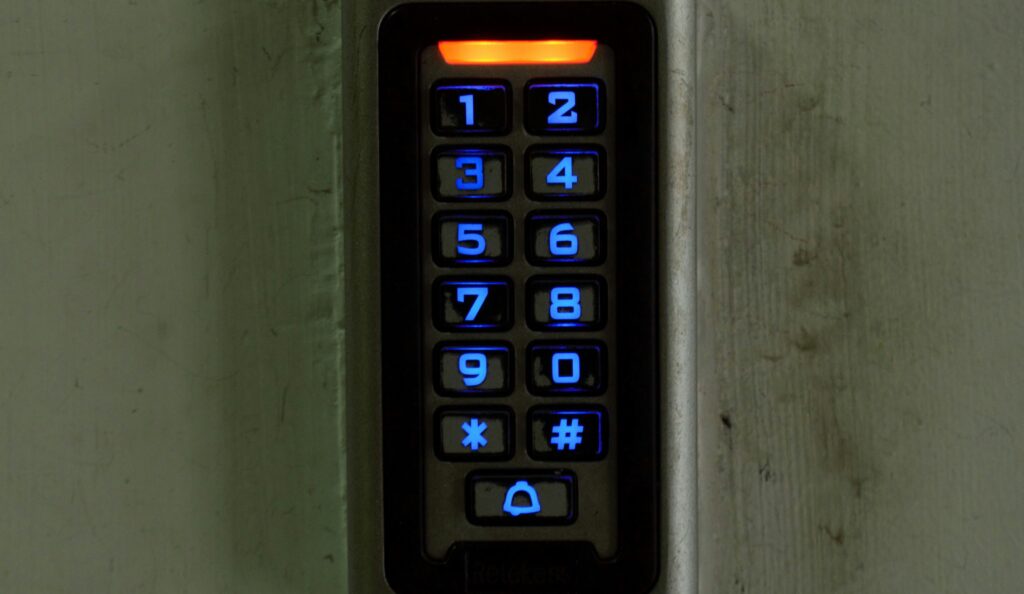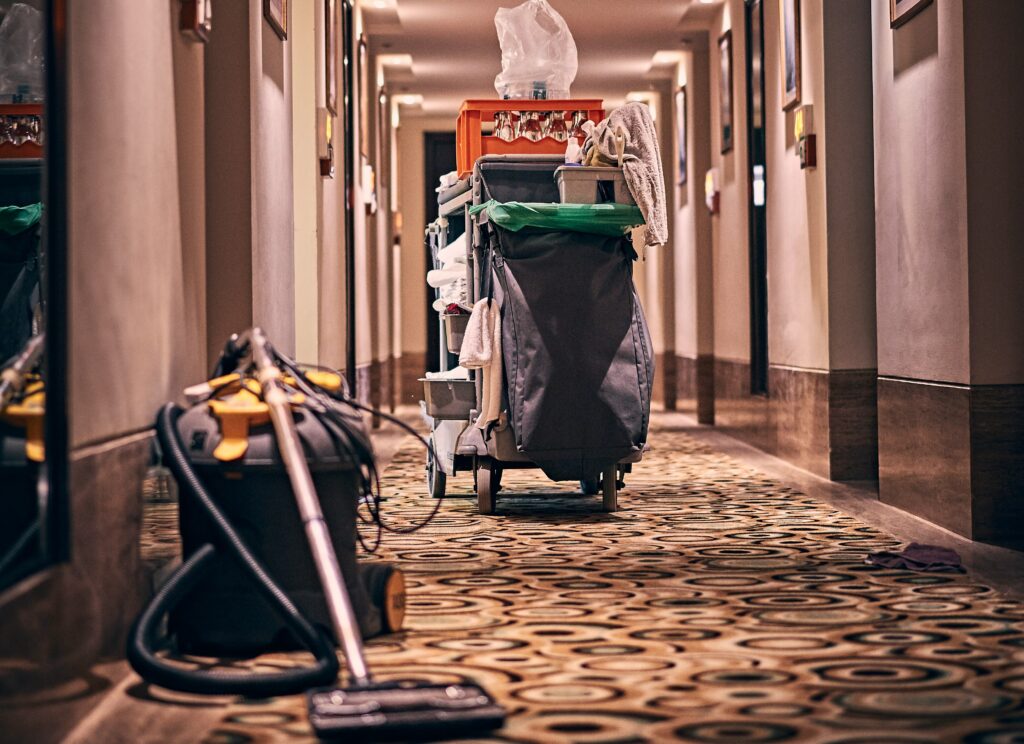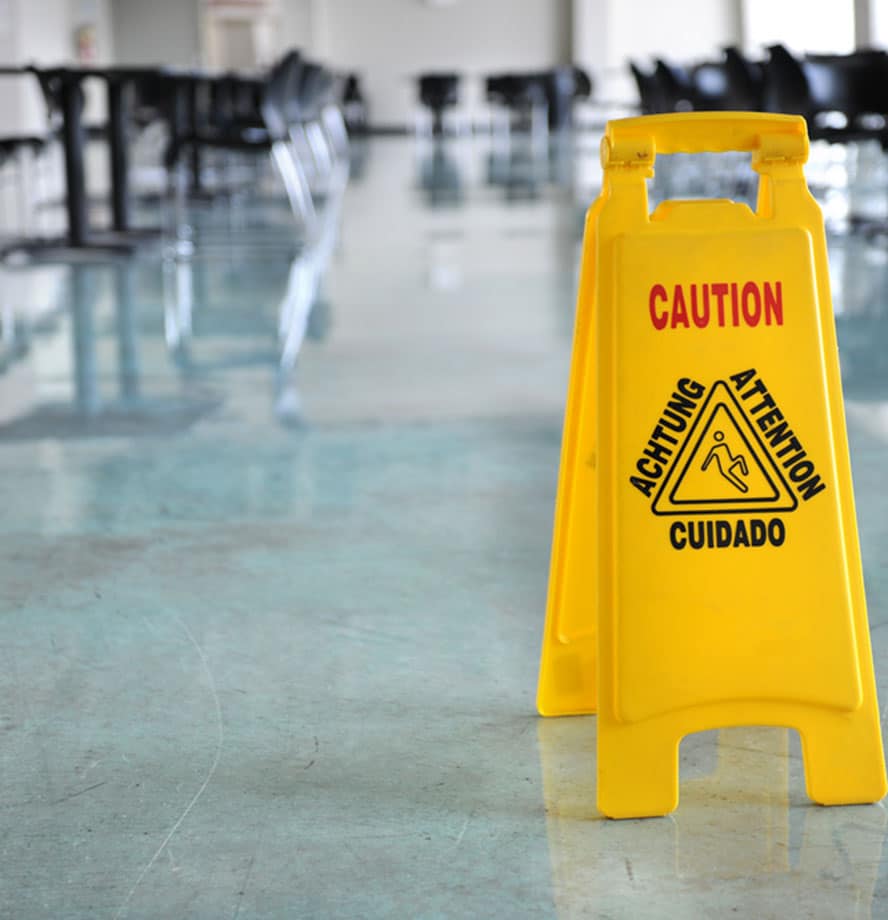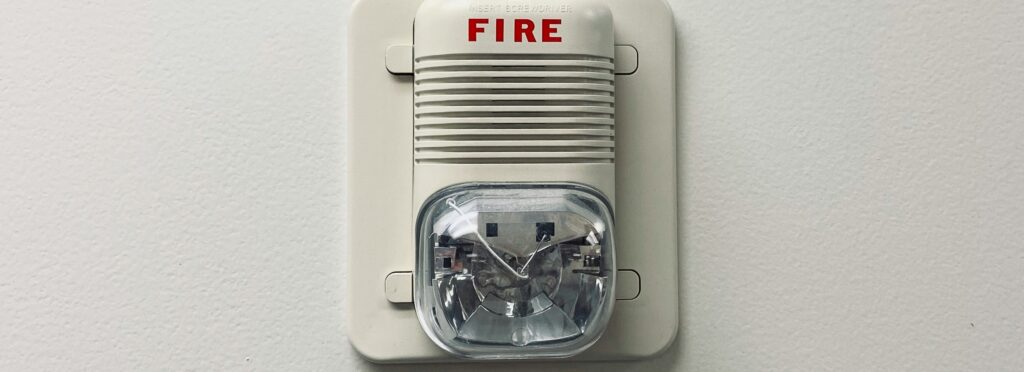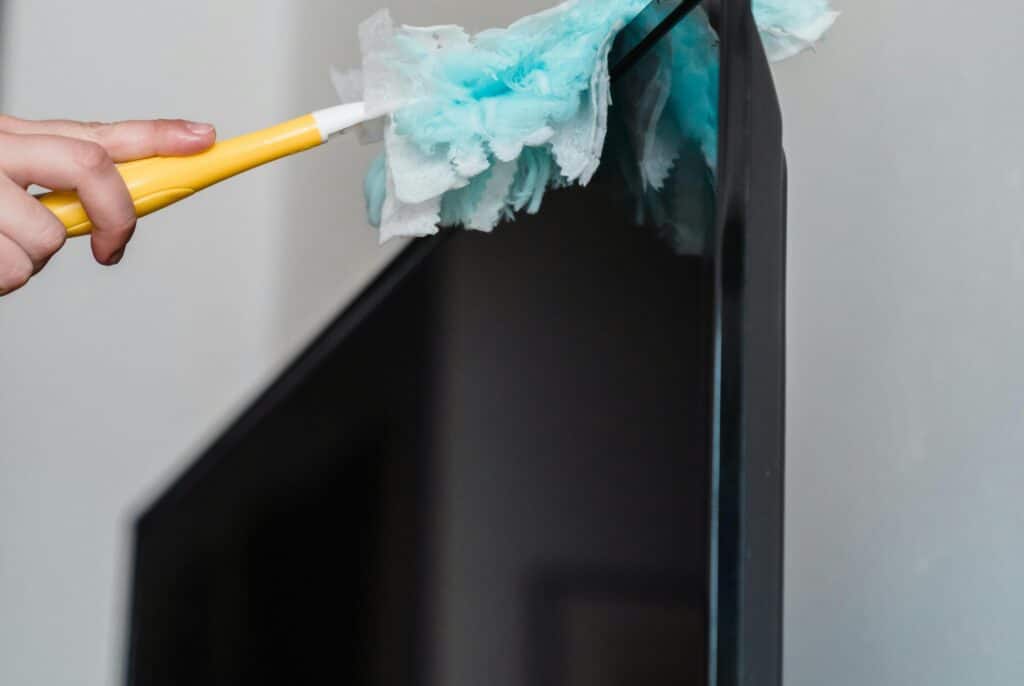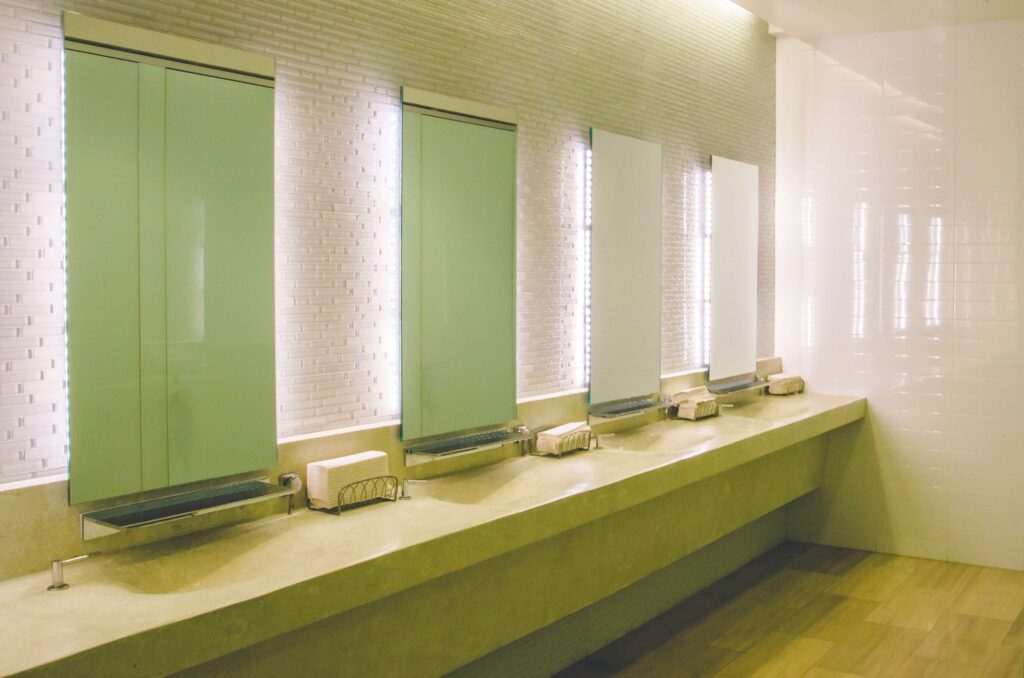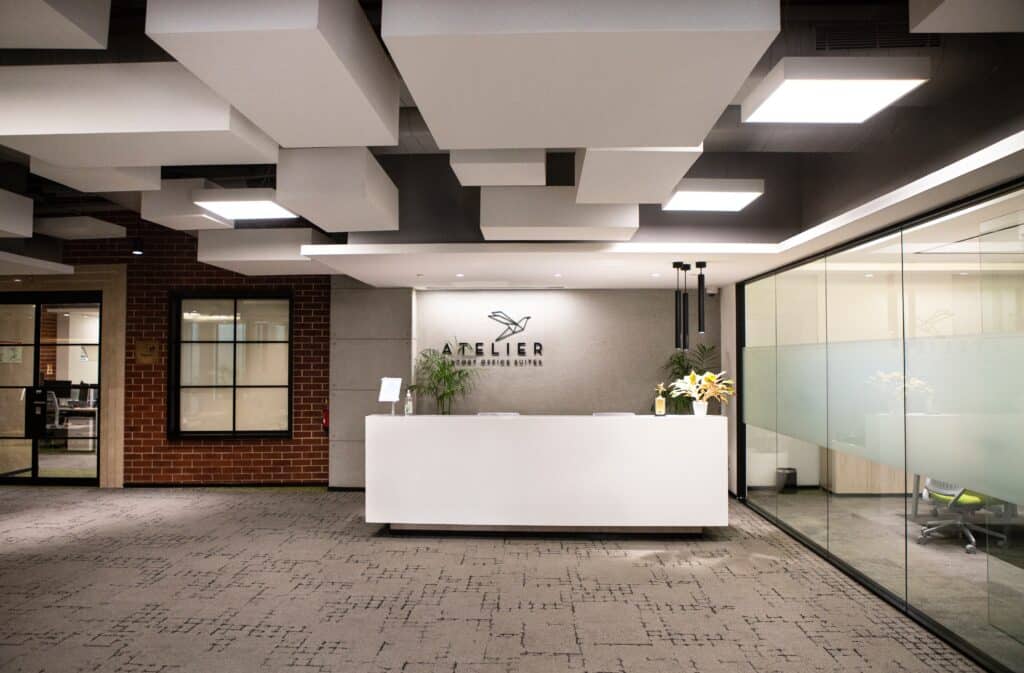Comprehensive Training Manual for Janitorial & Commercial Cleaning Staff
Welcome to the definitive training manual for commercial cleaning and janitorial services. Designed to empower new and existing employees, this manual covers essential protocols and practices required to maintain high standards of cleanliness and safety in any commercial cleaning environment.
From detailed cleaning techniques and equipment handling to safety protocols and customer interactions, this guide ensures all staff members are well-prepared to deliver exceptional service while adhering to the industry’s best practices.
Whether you are a training a new hire or seeking to understand your role as a supervisor aiming to enforce compliance and quality, this manual serves as an indispensable resource for achieving excellence in training cleaning staff and empowering cleaning business owners with infrastructure to grow their business.
Welcome to our team! As a new member of our janitorial staff, you’re about to embark on a structured training program designed specifically to equip you with the skills and knowledge needed for excellence in commercial cleaning. This program covers everything from routine cleaning tasks and specialized procedures to safety protocols and customer service.
Section 1: Introduction
Getting Started: Introduction to Your Cleaning Training
What You’ll Learn: You’ll be introduced to a wide range of cleaning tasks, learn about using cleaning products and equipment safely, and gain insight into specialized cleaning procedures that ensure our clients’ spaces remain impeccably clean.
How You’ll Learn: Your training will be a mix of classroom learning, practical hands-on sessions, and shadowing our experienced staff. This approach helps you understand both the theory and practice of professional cleaning.
Tools and Resources: We’ll provide you with all the training materials you need, including manuals, instructional videos, and access to online resources. You’ll also be equipped with personal protective equipment (PPE) and the cleaning supplies you’ll use during your training.
1.2 Objectives and Goals of Your Training
Developing Your Skills: We aim to help you master efficient and effective cleaning techniques, understand the layout and specific cleaning needs of different facilities, and proficiently use various cleaning products and equipment.
Gaining Knowledge: You’ll learn about our cleaning standards and protocols, the importance of chemical safety, and how to maintain cleaning equipment. Adhering to health and safety regulations will be a crucial part of your training.
Meeting Performance Standards: We expect high-quality work from all our team members. During your training, you’ll learn what constitutes high performance in terms of work quality, productivity, punctuality, and adherence to our company policies.
Committing to Continuous Improvement: We believe in lifelong learning and continuous improvement. You’ll receive ongoing training and feedback, helping you to always advance in your role.
1.3 Why Proper Training is Important
Safety First: Your training will minimize the risk of workplace accidents and injuries by teaching you how to safely handle cleaning chemicals and operate equipment. Understanding safety data sheets and emergency procedures is crucial for your safety and that of others.
Quality of Work: Through our training program, you’ll learn how to maintain high standards of cleanliness and sanitation, which are vital for satisfying and retaining our clients. Consistency in your cleaning practices ensures quality across all locations.
Efficiency on the Job: We train you to be efficient in your role, which means using resources wisely, reducing waste, and completing tasks effectively within a given timeframe without sacrificing quality.
Your Professional Growth: This program isn’t just about cleaning—it’s designed to enhance your career advancement opportunities, equipping you with valuable skills and knowledge that can be transferred to many roles and situations.
1.4 Conclusion of Introduction
Engage and Grow: We encourage you to fully engage with the training program. Don’t hesitate to ask questions and seek clarification when you need it. This is your time to learn and grow.
Take Pride in Your Work: Your role is crucial in maintaining the health and well-being of building occupants and creating welcoming environments. Take pride in the significant impact of your work, which enhances the daily experiences of everyone entering the buildings you help maintain.
We are excited to have you on board and look forward to seeing your skills develop as you progress through your training. Let’s strive for excellence together!
Sample Employee Handbook: Company Rules
Section 2: Employee Entering Building
Essential Entry Procedures for Janitorial Staff
Welcome to your daily routine! Each day you step into the building marks the beginning of another opportunity to excel in your role. To ensure everything runs smoothly from the moment you arrive, this section covers the essentials of clocking in, accessing the building, and understanding your assignments for the day.
2.1 Clocking In Procedures
How to Clock In:
Location: The clock-in terminal is located just inside the main employee entrance.
Method: You’ll use your employee ID card to swipe at the terminal. Ensure the terminal acknowledges your swipe with a beep and/or a visual confirmation on the screen.
Timing: Please clock in no later than five minutes before your shift starts. Late clock-ins could affect your attendance record.
What to Do If the Clock-In System Fails:
If you encounter any issues with clocking in, such as the terminal not working or your card being misplaced, immediately report to your supervisor or the human resources department to manually clock you in and address the issue to avoid any discrepancies in your attendance record.
2.2 Understanding Access Codes and Keys
Accessing Secured Areas:
Access Codes: Certain areas of the building, like supply rooms or sensitive client spaces, may require a code. If your role requires access to these areas, you will receive a unique code during your orientation. Keep this code confidential to ensure building security.
Keys: Similar to access codes, keys are provided based on your role and the areas you need to enter. If you are responsible for opening or closing certain areas, you will be assigned the appropriate keys.
Responsibility and Security:
Handling: Always carry your keys and access cards securely and never leave them unattended. Misuse or loss should be reported immediately to prevent security breaches.
Return Policy: Upon ending your employment or changing roles that no longer require access to previously assigned areas, you must return all keys and access cards to your supervisor or the HR department.
2.3 Supervisor and Building Assignments
Knowing Your Supervisor:
You will be assigned a supervisor who oversees your work. They are your first point of contact for any day-to-day operational questions, guidance, or issues that may arise.
Contact Information: You’ll receive a list of contact details for your supervisor and backup contacts during your orientation. Keep this information accessible for quick communication.
Understanding Your Building Assignments:
Daily Briefings: At the start of each shift, your supervisor will provide details about specific tasks and areas of focus for the day. This may vary depending on client needs and operational requirements.
Assignment Sheets: For more detailed information, refer to the assignment sheets posted in the employee break room or given directly by your supervisor. These sheets will outline specific rooms, floors, or tasks assigned to you for that shift.
Flexibility and Updates:
Changes: Building assignments can change based on client needs or operational challenges. Always check in with your supervisor if you notice any discrepancies between your assignment sheet and the actual condition or setup of your designated area.
Feedback: If you encounter any issues or have suggestions for improvement, discuss them with your supervisor. Your input is valuable in enhancing our services and operational efficiency.
Summary of Section 2
By understanding and following these procedures, you ensure a smooth start to your day and maintain the security and efficiency of our operations. Remember, your role is essential in the upkeep and security of the building, and your diligence in these initial steps helps set the tone for a productive workday. Let’s make it a great day!
Section 3: Cleaning Techniques and Standards
Mastering Cleaning Techniques and Equipment Maintenance
As a vital member of our cleaning team, mastering the proper techniques and standards for cleaning and equipment maintenance is crucial. This section provides you with detailed guidance on handling cleaning equipment, maintaining vacuums, managing cleaning supplies, and organizing the housekeeping closet efficiently.
3.1 General Equipment Handling
Safe Operation:
Always read and follow the manufacturer’s instructions before using any new cleaning equipment.
Check the equipment for any damage or wear before and after each use. Report any malfunctioning equipment to your supervisor immediately to prevent accidents and ensure timely repairs.
Efficiency Tips:
Use equipment as intended to maximize efficiency. For example, use high-speed buffers only on floors that are designated to withstand such equipment.
Handle all equipment with care to extend its lifespan and maintain its efficiency.
3.2 Vacuum Maintenance (Belts, Bags)
Checking and Replacing Vacuum Bags:
Frequency: Check vacuum bags daily or more frequently if they appear to be filling up quickly.
Procedure: Ensure the vacuum is unplugged before opening the compartment to check the bag. Replace the bag if it is three-quarters full to maintain optimal suction and prevent strain on the motor.
Maintaining and Replacing Belts:
Frequency: Inspect belts monthly or sooner if the vacuum shows signs of distress or decreased effectiveness.
Procedure: Unplug the vacuum, locate the belt compartment, and check for any signs of wear such as cracks or looseness. Replace the belt if it’s damaged or has lost elasticity to ensure the vacuum operates at peak efficiency.
3.3 Proper Labeling and Storage of Bottles and Containers
Labeling Guidelines:
Use clear, legible labels on all bottles and containers, specifying the contents and any safety warnings.
Update labels immediately if the contents change, and ensure that old labels are removed completely to avoid confusion.
Storage Practices:
Store cleaning chemicals in a cool, dry place away from direct sunlight and heat sources to prevent degradation of the products.
Keep all bottles and containers securely closed when not in use and ensure they are stored upright to prevent leaks and spills.
3.4 Mops and Mop Buckets
Mop Care:
Rinse mops after each use with clean water and hang them to dry in a well-ventilated area to prevent mildew and odor development.
Replace mop heads regularly based on wear and tear or as soon as they start to look frayed or ineffective.
Mop Bucket Maintenance:
Clean and dry mop buckets immediately after use. This prevents bacterial growth and extends the life of the bucket.
Check for residues at the bottom of the bucket and use a disinfectant to clean it thoroughly once a week or as needed based on usage.
3.5 Housekeeping Closet Organization
Optimal Setup:
Organize the housekeeping closet by grouping similar items together, such as all bathroom cleaning supplies in one area and floor care products in another.
Use clear bins and organizers to store small items like brushes, sponges, and gloves. Label these bins for easy identification.
Maintaining Cleanliness and Accessibility:
Ensure that the housekeeping closet is kept clean and orderly at all times. A cluttered closet can lead to inefficiencies and accidents.
Make sure all items are easily accessible, and frequently used supplies are placed at a convenient height.
Summary of Section 3
Understanding and implementing these cleaning techniques and standards will not only make your job easier but also ensure you provide the best possible service. Proper care and maintenance of equipment and supplies reflect professionalism and respect for the facilities we maintain and the people who use them. Always take pride in your work and strive for excellence by adhering to these guidelines.
Sample Employee Training Evaluation
Adhering to Safety Protocols in Janitorial Services
Section 4: Safety Protocols
Safety is our top priority, not only for the well-being of our team members but also for everyone who enters the facilities we care for. This section will guide you through the necessary safety protocols, including how to properly wear your uniform, handle chemicals, and use personal protective equipment (PPE). Adhering to these guidelines ensures a safe working environment for all.
4.1 Uniform Guidelines
Proper Wear:
Always wear your uniform during working hours to ensure you are easily identifiable as a member of the staff. This promotes professionalism and helps maintain security within the building.
Keep your uniform clean and in good repair. Replace any item that becomes worn out or damaged.
Proper ID Display:
Your ID badge must be visible at all times while on the premises. It should be attached to the front of your uniform for easy visibility. This is crucial not only for security purposes but also for accessibility in case of emergencies.
4.2 Usage of Wet Floor Signs and Walk-off Mats
Wet Floor Signs:
Always place wet floor signs in visible areas immediately after beginning any wet cleaning processes. This is vital to prevent slips and falls, ensuring both your safety and the safety of building occupants.
Do not remove the signs until the floor is completely dry.
Walk-off Mats:
Properly position walk-off mats at every entrance to reduce the amount of dirt and moisture tracked into the facility. This helps maintain cleaner floors and reduces the risk of slips.
4.3 Safety and Compliance
Personal Protective Equipment (PPE):
Gloves, Masks, and Non-slip Shoes: Always wear gloves when handling cleaning chemicals or performing tasks that might expose you to harmful substances. Masks should be worn during tasks that generate dust or involve the use of aerosol sprays. Non-slip shoes are essential to prevent falls, especially when working in wet areas.
Handling Chemicals:
Receive training on the proper use and storage of cleaning chemicals. It’s crucial to understand how to safely handle these substances to avoid chemical burns, inhalation of fumes, or other injuries.
Always follow the guidelines provided in the Material Safety Data Sheets (MSDS) for each chemical. These sheets provide detailed information on the chemical properties, health hazards, storage, disposal, and first aid measures.
Emergency Procedures:
Spills and Accidents: Know the specific procedures for dealing with spills of different types of substances. For chemical spills, use appropriate spill kits and follow the cleanup procedures outlined in the MSDS.
Accidents or Exposure: In case of an accident or exposure to hazardous materials, follow the emergency response procedures immediately. This includes notifying your supervisor, seeking first aid, and documenting the incident for further investigation and prevention.
Summary of Section 4
Adhering to these safety protocols is not just a part of your job—it is integral to maintaining a safe work environment. Always remember that taking shortcuts can lead to accidents, so it’s important to follow all guidelines meticulously. If you’re ever unsure about a procedure or find yourself in an unsafe situation, do not hesitate to reach out to your supervisor for guidance. Your safety and the safety of those around you depend on your vigilance and commitment to these standards.
12 Month Cleaning Staff Safety Policy Template
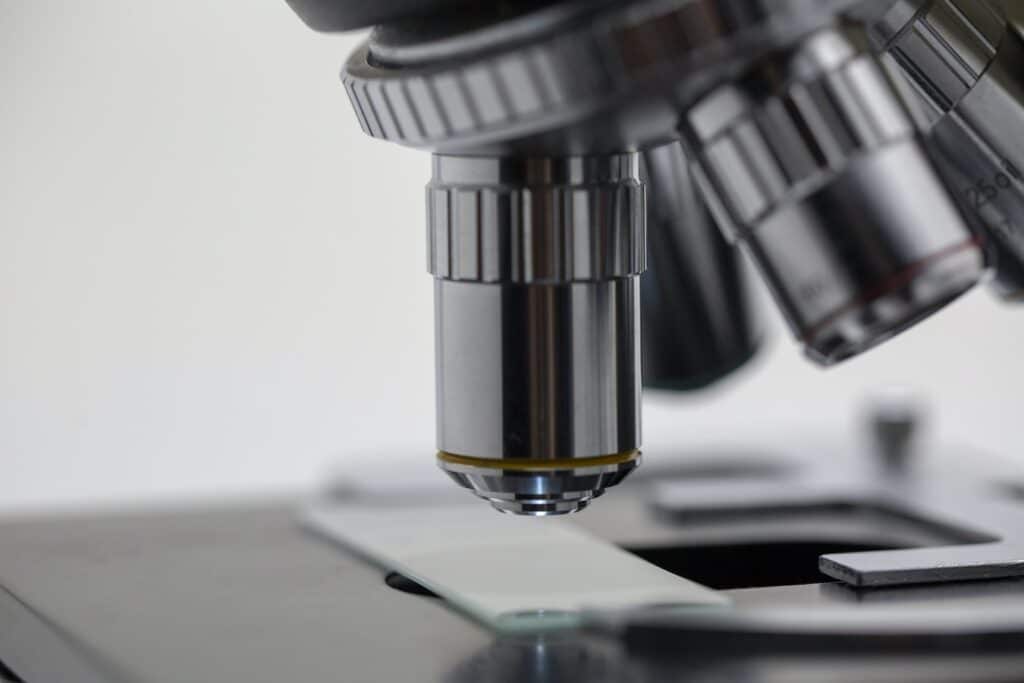
Implementing Quality Control and Inspection Checklists
Section 5: Inspection and Quality Control
In our commitment to maintaining the highest standards of cleanliness and safety, regular inspections and quality control are pivotal. This section outlines how you, as a valuable member of our team, will be involved in practical training, shadowing, and regular inspections to ensure that our services meet and exceed expectations.
5.1 Practical Training and Shadowing
Hands-On Practice:
Purpose: The aim is to provide you with direct, practical experience in the cleaning tasks you will be responsible for. This hands-on practice is crucial for building your confidence and competence.
Process: Under the supervision of a seasoned team member, you’ll perform a variety of cleaning tasks using the techniques and standards you’ve learned in training. Supervisors will provide immediate feedback and guidance, helping you refine your skills and approach.
Shadowing:
Objective: Shadowing experienced staff members allows you to observe firsthand the workflow and task management strategies that lead to efficient and effective cleaning.
Benefits: By accompanying seasoned cleaners, you’ll gain insights into the nuances of professional cleaning, including time management, the proper use of cleaning equipment, and the customization of cleaning techniques to specific areas and materials.
5.2 Weekly Inspection Checklist
To ensure consistency and high standards across all our cleaning operations, we utilize a detailed weekly inspection checklist. This checklist is a tool for both self-assessment and supervisor evaluations, focusing on equipment, cleanliness, and adherence to safety protocols.
Equipment Checks:
Weekly Review: Verify that all cleaning equipment is in good working order. This includes checking vacuum cleaners, floor buffers, and other machinery for wear and tear, ensuring everything functions correctly for effective cleaning.
Record Keeping: Log any equipment issues in the maintenance journal. Tag and report any malfunctioning equipment to your supervisor for repair or replacement to avoid any disruption in your cleaning schedule.
Area-Specific Cleaning Reviews:
Focus Areas: Each area within the facility has specific cleaning needs. During your shift, ensure that you follow the cleaning protocols detailed in your training for each designated area, whether it’s restrooms, kitchens, offices, or common areas.
Quality Checks: Use the checklist to assess your cleaning effectiveness, noting areas that may require more attention or different techniques. Feedback from these reviews will help you develop your cleaning strategy and prioritize tasks during your shifts.
Safety and Cleanliness Standards:
Safety Audits: Regular safety checks are part of the inspection process. Ensure all areas are free of hazards that could cause slips, trips, or falls. Proper placement of safety signage, securing electrical cords, and ensuring wet floors are marked are key components of these audits.
Cleanliness Validation: Alongside safety, the visual inspection of cleanliness levels is conducted. Surfaces should be dust-free, floors should be clean without sticky areas or debris, and there should be no lingering odors. Your ability to maintain these standards is crucial for passing inspections.
Conclusion of Section 5
Your active participation in practical training, shadowing, and adhering to the weekly inspection checklist is essential for your success and growth within our team. These practices not only enhance your skills but also ensure that our clients enjoy a clean, safe, and welcoming environment. Always strive for excellence in every task, knowing that the quality of your work directly impacts the satisfaction of our clients and the reputation of our services.
Sample Applicant Tracking Worksheet

Guidelines for Professional Conduct and Customer Interaction
Section 6: Customer Interaction and Professional Conduct
Your interactions with clients and building occupants play a pivotal role in our success and reputation. This section is designed to guide you through the essentials of professional conduct, effective communication, and handling special requests or complaints with the utmost professionalism.
6.1 Interacting with Building Occupants
Approach and Communication:
Greeting and Acknowledgment: Always greet occupants with a polite nod or a smile as you encounter them in your work areas. Such positive interactions not only reflect well on our company but also contribute to a friendly environment.
Maintaining Professionalism: Keep your interactions professional at all times. This means using respectful language, maintaining an appropriate tone, and keeping conversations work-related. If occupants ask questions about your tasks, provide clear, concise, and polite responses.
Privacy and Respect:
Working Around Occupants: Sometimes, you will need to clean while spaces are occupied. Always announce your presence courteously and ask if it’s a convenient time to perform your tasks. If not, try to accommodate their needs when possible.
Handling Interruptions: If you are interrupted during your work, listen attentively and respond respectfully. If a request falls outside your responsibilities, politely direct them to someone who can help.
6.2 Handling Special Requests and Complaints
Receiving Requests:
Procedure for Special Requests: When occupants make special cleaning requests, listen carefully, and make sure you understand the details. Note any specific instructions they may provide. Confirm that you or your team can handle the request, or escalate it to your supervisor if necessary.
Documentation: Document all special requests in the daily log, noting who made the request and the specifics of the task. This helps track the extra duties and ensures they are not overlooked.
Addressing Complaints:
Immediate Response: When receiving a complaint, listen without interrupting, and acknowledge the issue. Apologize for any inconvenience and assure the occupant that you will address the problem promptly.
Follow-up: Inform your supervisor about the complaint, follow the prescribed procedure to resolve the issue, and check back with the occupant to ensure their satisfaction once the issue is resolved.
6.3 Professional Behavior and Ethical Conduct
Ethics in the Workplace:
Honesty and Integrity: Conduct yourself with integrity in all your professional interactions. Do not engage in theft, use of company property for personal gain, or falsification of time records.
Confidentiality: You may encounter sensitive information or overhear conversations while in the building. It’s crucial to keep this information confidential and not discuss or disclose it to anyone.
Respecting Company Property and Resources:
Use of Supplies: Use cleaning supplies and equipment only for their intended purposes and treat them with care to avoid waste and damage.
Resource Management: Be mindful of conserving resources such as water and electricity. Turn off lights and equipment when not in use.
Summary of Section 6
Every interaction you have while on the job is a reflection of our company’s values and your professionalism. By adhering to the guidelines outlined in this section, you help maintain a high standard of service and contribute to a positive image of our company. Remember, your professional behavior and ethical conduct are key to building trust and respect with our clients and their building occupants.
Emergency Response and Incident Reporting Protocols
Section 7: Emergency Procedures and Incident Reporting
In your role, being prepared to handle emergencies and report incidents properly is crucial. This section will equip you with the necessary knowledge and protocols to act swiftly and effectively when faced with unexpected situations. Understanding and following these procedures will help ensure your safety and the safety of others.
7.1 Emergency Contact Procedures
Knowing Who to Contact:
Emergency Contacts List: At the start of your employment, you will be provided with a list of emergency contacts, including numbers for the building security team, local emergency services, and key company personnel. Keep this list accessible at all times, preferably in your phone and in a physical location within your workspace.
Immediate Action: In case of an emergency, assess the situation quickly but calmly. If it involves a threat to life or property, such as a fire or serious injury, call 911 immediately before notifying your supervisor.
Communication Protocol:
After contacting emergency services, inform your supervisor or the designated emergency coordinator about the incident. Provide them with all necessary details, such as the nature of the emergency, location within the building, and any immediate actions you have taken.
7.2 Reporting Damages and Security Incidents
Documentation of Damages:
Assessment and Reporting: If you notice damage to property, such as broken equipment or vandalism, document the scene with photos if possible and note any relevant details. Report this information to your supervisor without delay.
Maintenance Requests: For non-emergency damages that require repair, such as a leaky faucet or a malfunctioning light fixture, use the company’s maintenance request system to ensure the issue is addressed promptly.
Security Incidents:
Protocol for Suspicious Activity: If you witness suspicious behavior or security breaches, such as unauthorized access or theft, remain safe and do not confront the individuals involved. Report the incident immediately to building security and your supervisor.
Confidentiality: Maintain confidentiality and discretion when handling sensitive incidents. Share information only with those who need to know to protect the integrity of the investigation and safety procedures.
7.3 Handling Unexpected Situations
Preparation and Awareness:
Familiarity with Environment: Regularly review the layout of the facility, noting all exits and emergency equipment locations. Familiarity with your environment can significantly enhance your response time during emergencies.
Participation in Drills: Actively participate in all emergency drills, which may include fire drills, earthquake drills, or other relevant emergency response exercises. These drills are crucial for understanding how to act in real scenarios.
On-the-Spot Decision Making:
Calm and Decisive Action: In unexpected situations, such as discovering a water leak or electrical issue, assess the severity of the situation quickly and take appropriate action to mitigate damage. This might involve shutting off water or power supplies, evacuating the area, or using emergency equipment.
Continuous Learning: After handling an unexpected situation, review the outcome and your actions with your supervisor to learn what was handled well and what could be improved. Continuous learning will enhance your ability to deal with future incidents.
Summary of Section 7
Being prepared for emergencies and knowing how to report incidents and damages are essential parts of your responsibilities. By following these procedures, you not only ensure your own safety but also contribute to the safety and security of the entire facility. Always remain alert, informed, and ready to act according to the training and guidelines provided.
9 Step Employee Onboarding Template
Standard Operating Procedure (SOP) for New Cleaner Training
Section 1: Office Cleaning Procedures
Daily Tasks
Empty and Replace Trash Liners (5 times a week)
Objective: Ensure all trash bins are emptied and liners replaced to maintain hygiene.
Procedure: Wear gloves. Remove the existing liner with all contents, seal it, and dispose of it in the designated dumpster. Sanitize the bin if necessary before placing a new liner.
Safety Notes: Handle sharp objects with care; do not compress trash with hands.
Dust and Wipe Surfaces (5 times a week)
Objective: Keep all conference tables, executive desks, and accessible surfaces dust-free and clean.
Procedure: Use a microfiber cloth and appropriate dusting spray. Wipe surfaces in a systematic manner, starting from one end of the room to the other, ensuring all areas are covered.
Vacuum All Carpeted Areas (5 times a week)
Objective: Maintain cleanliness and extend the life of carpeting through regular vacuuming.
Procedure: Use upright or backpack vacuums depending on the area. Vacuum in overlapping, systematic paths to ensure complete coverage. Check the vacuum bag/compartment regularly and replace when full.
Clean Drinking Machines (5 times a week)
Objective: Ensure hygiene and functionality of drinking machines.
Procedure: Wipe external surfaces with a disinfectant wipe. Clean drip trays and dispensing areas to prevent buildup of residues and contaminants.
Sweep and Damp Mop Tile Floors (5 times a week)
Objective: Keep tile floors clean and free of debris.
Procedure: First sweep to remove loose dirt, then mop using a damp mop with a suitable cleaning solution. Change water when visibly dirty to prevent spreading dirt.
Spot Clean Carpet (5 times a week)
Objective: Address spills and stains on carpets promptly to prevent set-in stains.
Procedure: Identify spots, use the appropriate carpet cleaner, apply spot cleaner, and blot with a clean cloth following the grain of the carpet.
Weekly Tasks
High Dusting (Once a week)
Objective: Remove dust from high surfaces such as tops of cabinets, light fixtures, and high shelves.
Procedure: Use an extendable duster. Ensure stability if using ladders. Work from top to bottom to prevent resettling of dust.
Low Dusting Baseboards (Once a week)
Objective: Keep baseboards clean to enhance overall cleanliness and detail.
Procedure: Use a microfiber cloth or a duster to wipe down all accessible baseboards, paying special attention to corners and edges.
Dust Top File Cabinets (Once a week)
Objective: Prevent accumulation of dust that can contribute to poor indoor air quality.
Procedure: Use a step stool if needed to reach the top of file cabinets. Use a microfiber cloth and dusting spray if necessary.
Clean Glass Areas Inside Building (Once a week)
Objective: Maintain streak-free cleanliness of glass partitions and interior windows.
Procedure: Use a glass cleaner and a squeegee or microfiber cloth. Apply cleaner to the glass and use the squeegee in a vertical or horizontal motion for a streak-free finish.
Section 2 Standard Operating Procedure (SOP) for Restroom Cleaning
Objective: Ensure that all restrooms are clean, sanitary, and well-stocked at all times to provide a comfortable and hygienic environment for building occupants and visitors.
Daily Cleaning Tasks
Sweeping Floors
Frequency: 5 times a week.
Procedure: Use a broom to sweep all areas of the restroom floor, paying special attention to corners and edges where debris tends to accumulate. Ensure all visible debris is removed before mopping.
Mopping Floors
Frequency: 5 times a week.
Procedure: After sweeping, use a damp mop with a disinfectant solution to mop the floors. Start from the farthest corner and work towards the door to avoid walking on the cleaned surface.
Cleaning and Disinfecting Toilets and Urinals
Frequency: 5 times a week.
Procedure: Apply a disinfectant cleaner inside the bowl and on all exterior surfaces of the toilets and urinals, including under the rim. Use a toilet brush to scrub inside the bowl, ensuring all buildup is removed. Wipe exterior surfaces with a disinfectant wipe or cloth.
Cleaning and Disinfecting Sinks and Countertops
Frequency: 5 times a week.
Procedure: Use a disinfectant cleaner on sinks and countertops. Scrub with a non-abrasive sponge or cloth to remove soap scum and stains. Rinse thoroughly with water and dry with a clean cloth to prevent water spots.
Polishing Mirrors
Frequency: 5 times a week.
Procedure: Spray glass cleaner on mirrors and wipe with a microfiber cloth in a circular motion to avoid streaks, ensuring a clear, streak-free finish.
Replenishing Soap and Paper Products
Frequency: 5 times a week.
Procedure: Check and refill all soap dispensers, paper towel holders, and toilet paper holders. Ensure that spare rolls are available under each dispenser for easy access.
Emptying Trash Receptacles
Frequency: 5 times a week.
Procedure: Remove the trash bag, tie it securely, and dispose of it in the designated waste disposal area. Clean the receptacle with a disinfectant if necessary, replace with a fresh liner, and return it to its original position.
Cleaning Partitions, Walls, and Doors
Frequency: 5 times a week.
Procedure: Wipe down all partitions, walls, and doors with a disinfectant. Pay special attention to high-touch areas like door handles and lock latches.
Weekly Cleaning Tasks
High Dusting
Frequency: Once a week.
Procedure: Use an extendable duster to remove dust from vents, the top of partitions, and other high surfaces.
Deep Cleaning of Floors with Turbo Tool
Frequency: Once a week.
Procedure: Use a turbo tool attachment on a vacuum cleaner to thoroughly clean edges and hard-to-reach areas of the restroom floors.
Detailed Cleaning of Baseboards
Frequency: Once a week.
Procedure: Wipe down baseboards with a damp cloth soaked in a disinfectant solution to remove dust and grime buildup.
Section 3: Standard Operating Procedure (SOP) for Cleaning Kitchens and Breakrooms
Objective: Maintain high standards of cleanliness and hygiene in kitchen and breakroom areas to ensure a healthy environment for food preparation and dining.
Daily Cleaning Tasks
Vacuuming and Sweeping
Frequency: Daily.
Procedure: Begin by removing chairs and other movable furniture. Vacuum or sweep under tables, chairs, and all accessible areas to remove crumbs and debris. Pay special attention to corners and edges.
Floor Care
Frequency: Daily for sweeping/vacuuming; mopping as needed or at least thrice a week.
Procedure:
Ceramic and VCT (Vinyl Composite Tile) Floors: Use a suitable cleaner for the floor type. Mop with a microfiber or string mop to ensure thorough cleaning and removal of footprints and stains.
Other Floors: If floors are of a different material (e.g., linoleum, wood), use cleaning products and methods appropriate for that specific material, following manufacturer’s recommendations.
Cleaning Tables and Countertops
Frequency: Daily.
Procedure: Wipe down all tables and countertops with a food-safe disinfectant. Ensure all surfaces are free of food debris and stains. Use clean cloths to prevent cross-contamination.
Chairs and Furniture
Frequency: Daily.
Procedure: Replace chairs and furniture to their original positions after cleaning floors. Wipe down chair seats, backs, and legs with a disinfectant, especially focusing on touchpoints.
Trash Management
Frequency: Daily and as needed.
Procedure: Empty all trash cans, replace liners, and clean the receptacles if necessary. Dispose of trash in the designated waste disposal areas. Sanitize the handles and lids of trash cans.
Stainless Steel Sink and Chrome Fixtures Cleaning
Frequency: Daily.
Procedure:
Disinfecting: Apply a disinfectant to the sink and fixtures to remove food particles and buildup. Scrub with a non-abrasive sponge or brush.
Polishing: After disinfecting, use a stainless steel cleaner or glass cleaner for chrome fixtures to polish and restore shine. Wipe with a clean, dry cloth to prevent water spots.
Replenishing Soap and Paper Products
Frequency: Daily and as needed.
Procedure: Check and refill soap dispensers, paper towels, and other consumables. Ensure there is an adequate supply for the next day.
Weekly Cleaning Tasks
Deep Cleaning of Floors
Frequency: Once a week.
Procedure: Perform a deep clean of all kitchen and breakroom floors using a steam mop or floor scrubber, depending on the floor type, to remove ingrained dirt and grime.
Detailed Furniture Cleaning
Frequency: Once a week.
Procedure: Move all furniture and appliances (where possible) and clean behind and underneath. Check for pest signs and report any issues to maintenance.

Section 4: Standard Operating Procedure (SOP) for Cleaning Lobbies and Common Areas
Objective: Ensure the lobby and common areas are clean, welcoming, and presentable at all times, reflecting the standards of the facility.
Daily Cleaning Tasks
Dusting
Frequency: Daily.
Procedure: Dust all accessible surfaces, including reception desks, waiting area furniture, window sills, and other flat surfaces. Use microfiber cloths to capture dust effectively without spreading it into the air. Pay special attention to high-touch areas like door handles, light switches, and railings.
Sweeping and Vacuuming
Frequency: Daily.
Procedure:
Sweeping: Use a soft-bristled broom to sweep hard floor areas, especially in corners and under furniture where dust and debris accumulate.
Vacuuming: Vacuum carpeted areas and rugs to remove dirt and debris. Use a vacuum cleaner fitted with a HEPA filter to ensure fine particles are trapped and not released back into the air.
Spot Cleaning
Frequency: As needed and during daily cleaning.
Procedure: Address spills and marks on carpets, upholstery, or floors immediately upon detection. Use appropriate cleaning agents for different surfaces to prevent staining. For carpets, use a carpet spot cleaner and blot the area, do not rub as this can spread the stain.
Cleaning Fixtures and Furniture
Frequency: Daily.
Procedure: Wipe down all furniture and fixtures using appropriate cleaning solutions. For upholstered furniture, use a fabric cleaner and conduct a patch test in an inconspicuous area first to ensure there is no discoloration or damage.
Specific Areas Cleaning
Entrance/Foyer
Mats and Carpets:
Frequency: Daily and as needed.
Procedure: Shake out entrance mats or vacuum them to remove debris. For carpets, perform regular vacuuming and treat spots or stains immediately to maintain a clean appearance.
Glass Cleaning:
Frequency: Daily.
Procedure: Clean all glass doors and windows reachable from the ground level using a glass cleaner and a squeegee. Ensure streak-free clarity to enhance visibility and light entry.
Corners and Edges:
Frequency: Daily during sweeping/vacuuming.
Procedure: Use corner brushes or vacuum attachments to clean hard-to-reach areas and edges where dust and debris tend to accumulate.
Floor Care:
Frequency: Daily.
Procedure: Sweep and mop hard floors using a suitable cleaning solution. For carpeted areas, ensure thorough vacuuming. Assess the floor for any needed deep cleaning or restoration work periodically.
Section 5 Standard Operating Procedure (SOP) for Janitor Closet Maintenance
Objective: Keep the janitor closet clean, organized, and functional to ensure efficiency and safety of cleaning operations.
Daily and Ongoing Tasks
General Cleanliness and Organization
Frequency: Daily and as needed.
Procedure: Ensure that the janitor closet is clean and free of debris at all times. Floors should be swept and any spills cleaned up immediately to prevent accidents. Organize supplies and equipment to maximize space and ensure easy access.
Labeling Bottles and Containers
Frequency: Upon receipt of new supplies and as needed.
Procedure: Clearly label all bottles and containers with their contents and any hazard warnings. Use permanent markers and waterproof labels. Ensure that labels are always visible and replace any that become worn or illegible.
Emptying Vacuum Bags
Frequency: Daily or after each use, depending on usage.
Procedure: Check vacuum bags regularly and empty them before they are completely full to maintain optimal suction and prevent damage to the vacuum. Dispose of the contents in designated waste disposal areas.
Checking Vacuum Belts
Frequency: Weekly.
Procedure: Inspect the belts of vacuums for wear and tear. Replace any belts that show signs of damage or have become loose to ensure the vacuum operates efficiently.
Weekly Tasks
Washing Mop Heads
Frequency: Weekly and as needed.
Procedure: Remove mop heads from handles and wash them using a disinfectant cleaner or in a washing machine if applicable. Allow mop heads to dry completely in a well-ventilated area before reattaching them to avoid mildew growth.
Cleaning Mop Buckets
Frequency: After each use and deep clean weekly.
Procedure: Rinse out mop buckets immediately after use to prevent residue buildup. Once a week, scrub buckets with a brush and a disinfectant cleaner. Rinse thoroughly and wipe dry.
Refilling Cleaning Solutions
Frequency: As needed.
Procedure: Monitor levels of cleaning solutions and refill containers when low. Use a funnel to avoid spills and ensure that each container is filled with the correct solution. Store all chemicals according to manufacturer’s instructions and safety guidelines.
Safety and Compliance
Proper Storage of Chemicals: Store all chemicals in accordance with OSHA guidelines. Ensure that flammable items are kept in a cool, dry area away from direct sunlight.
Handling of Supplies: Wear appropriate PPE when handling cleaning chemicals, especially when refilling containers or mixing solutions.
Emergency Preparedness: Keep an updated Material Safety Data Sheet (MSDS) for each chemical used in the closet and ensure all staff know how to access and use this information.
Download Your Free Cleaning Business Training SOP
Get our step-by-step Standard Operating Procedure (SOP) template used by top cleaning companies to train teams, improve quality, and grow with confidence. It’s an easy-to-follow PDF you can customize for your own business.
Get My Free SOP Template »No cost. No sign-up pressure. Just a ready-to-use system for training and consistency.
Want a complete Commercial Cleaning Training Manual + SOP you can customize?
Download the Free Training Manual
